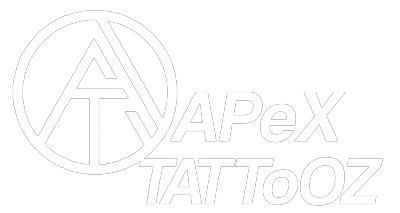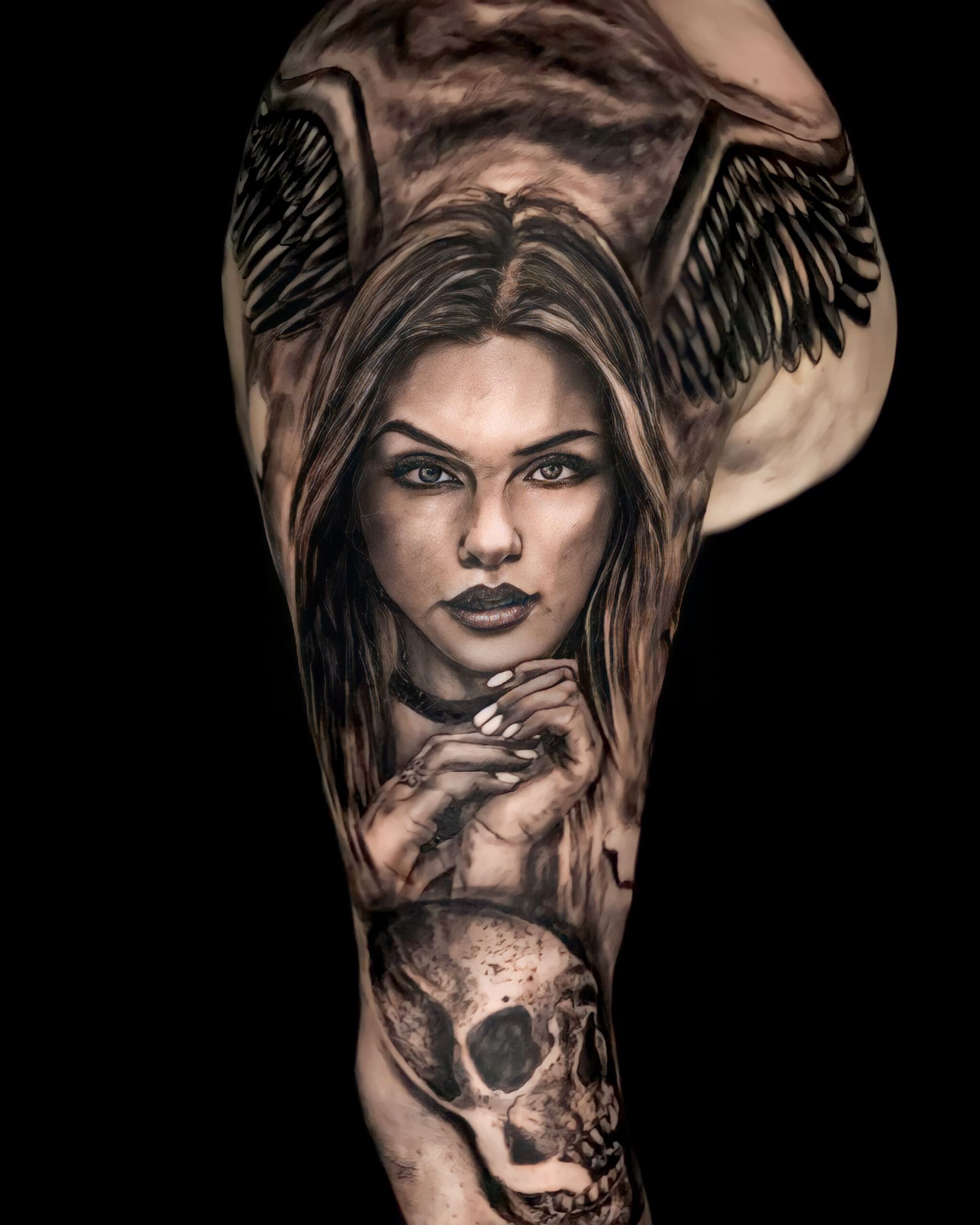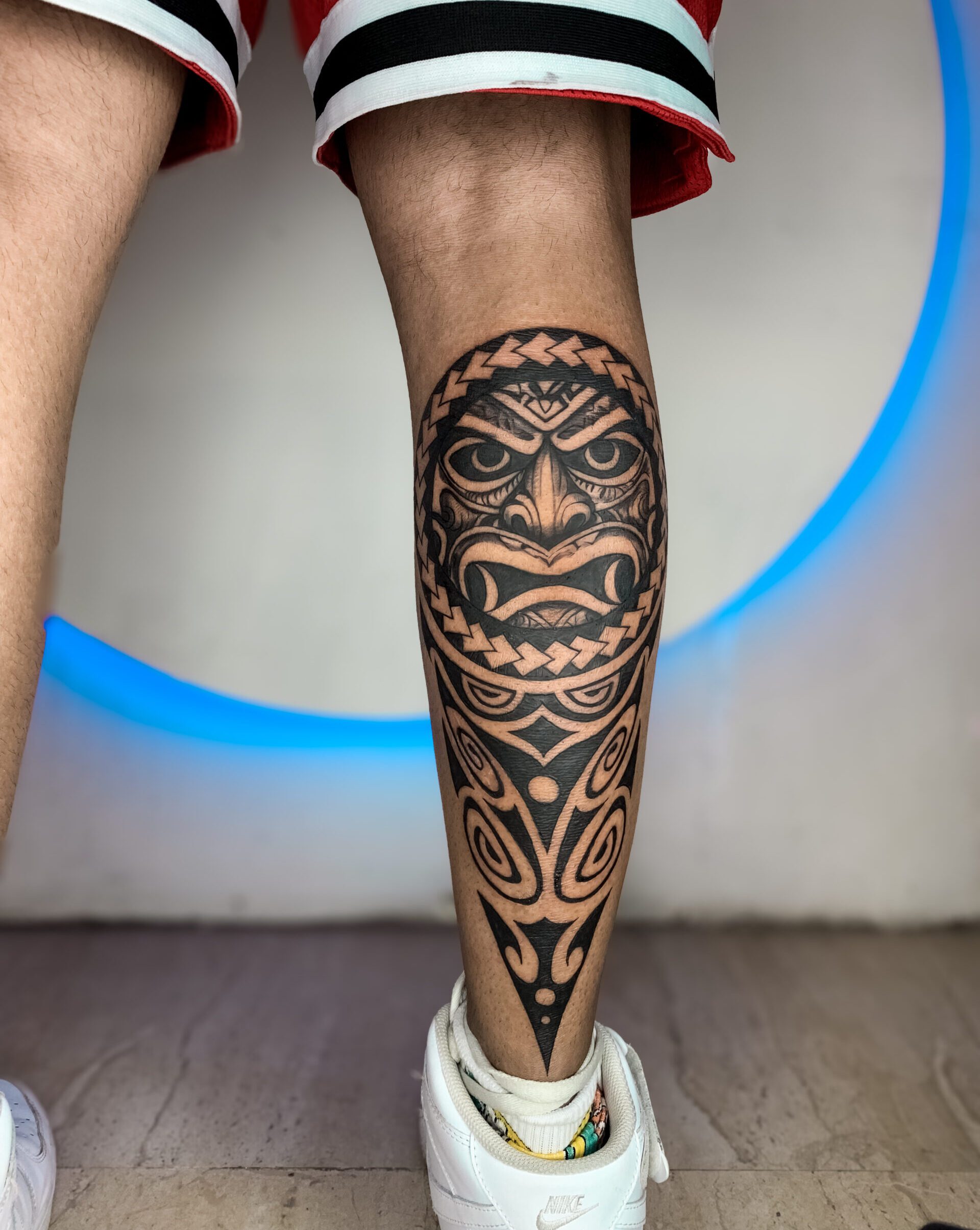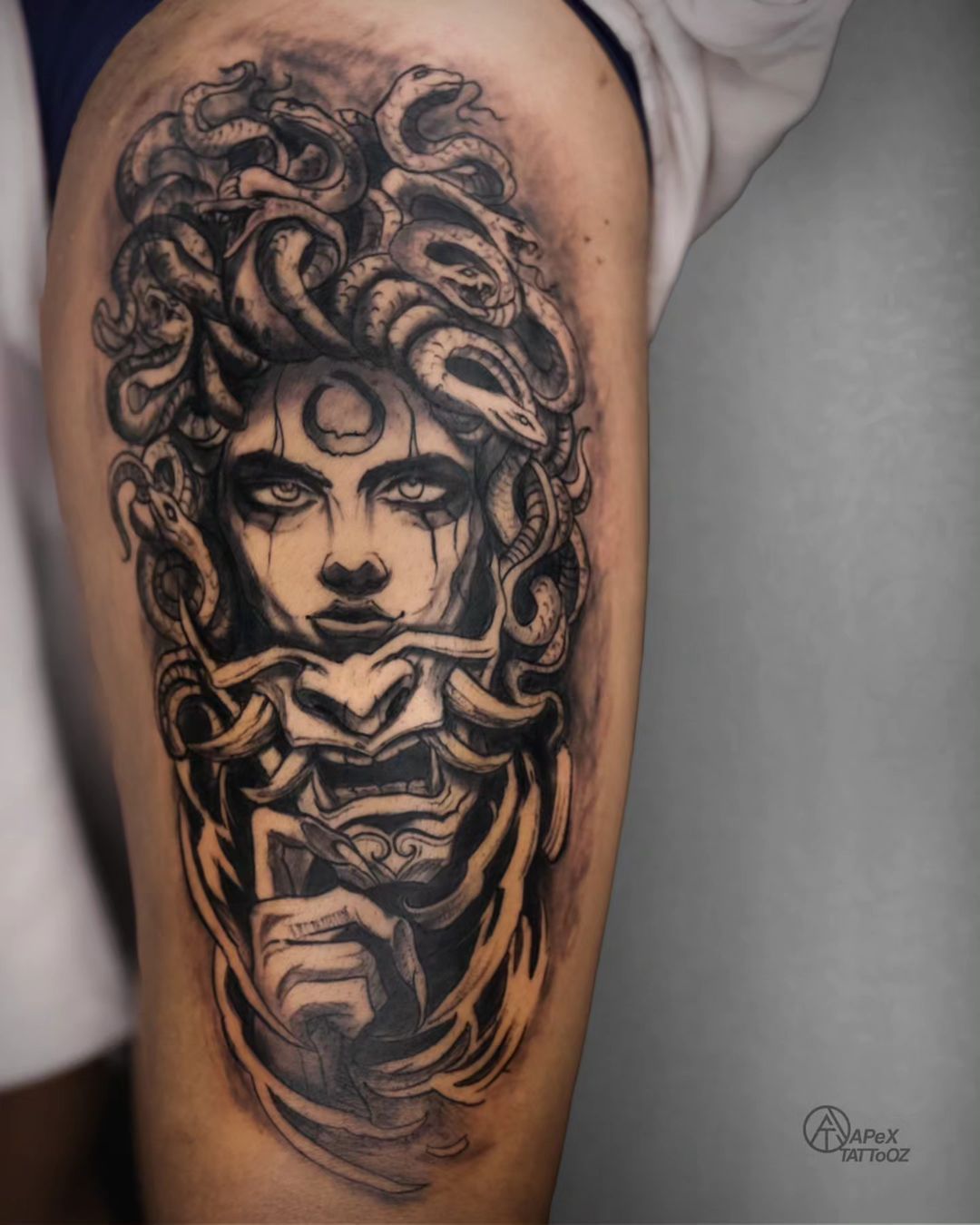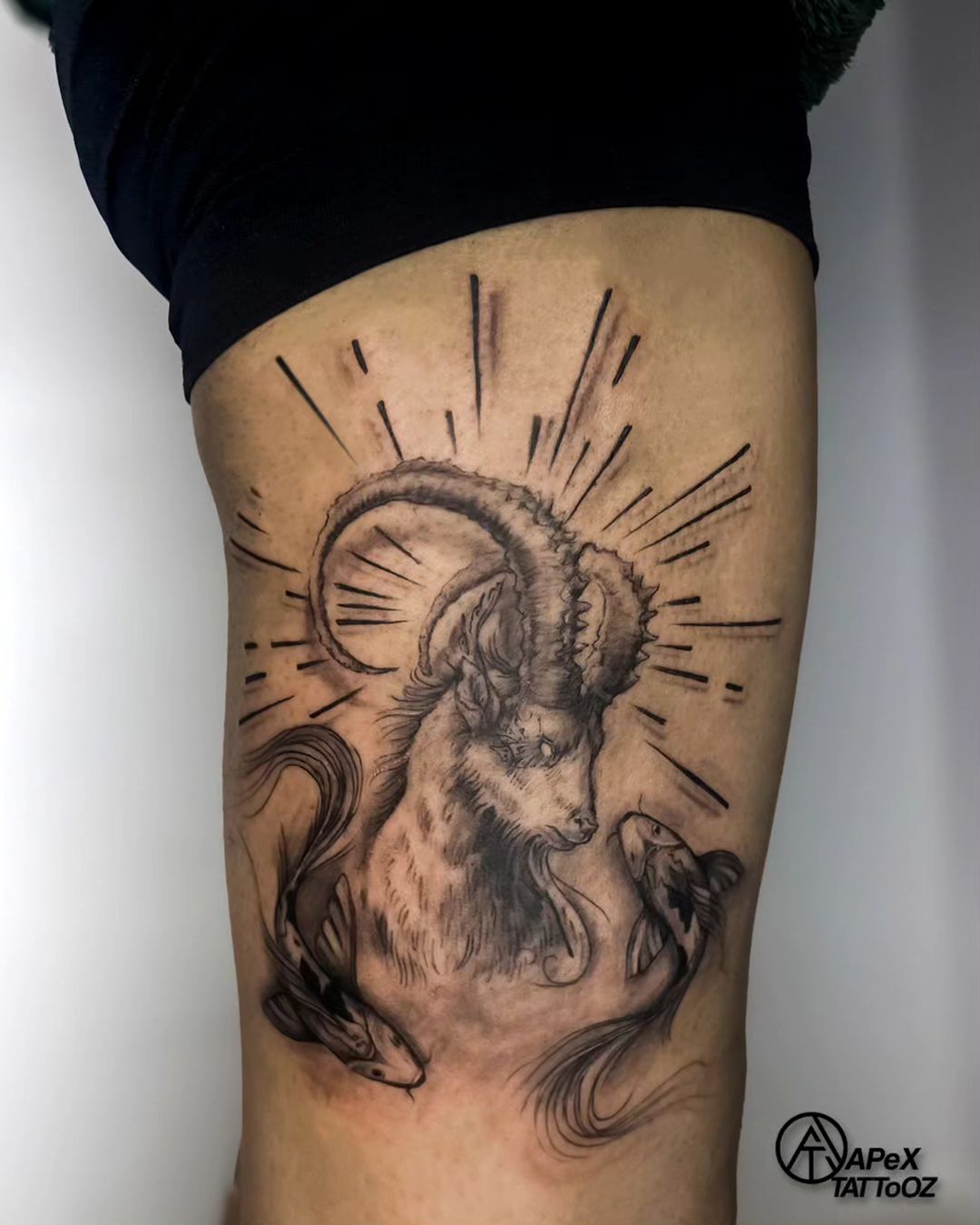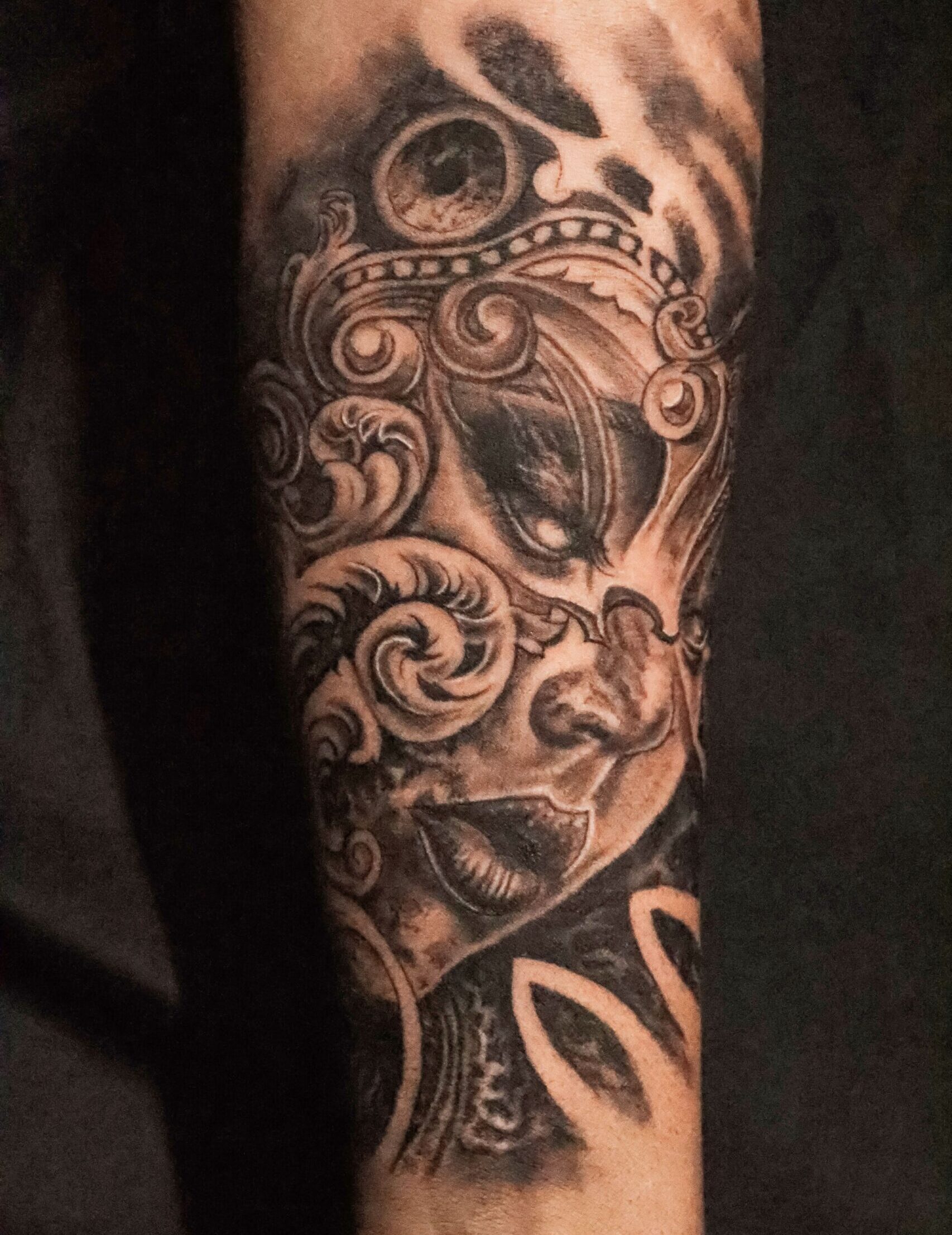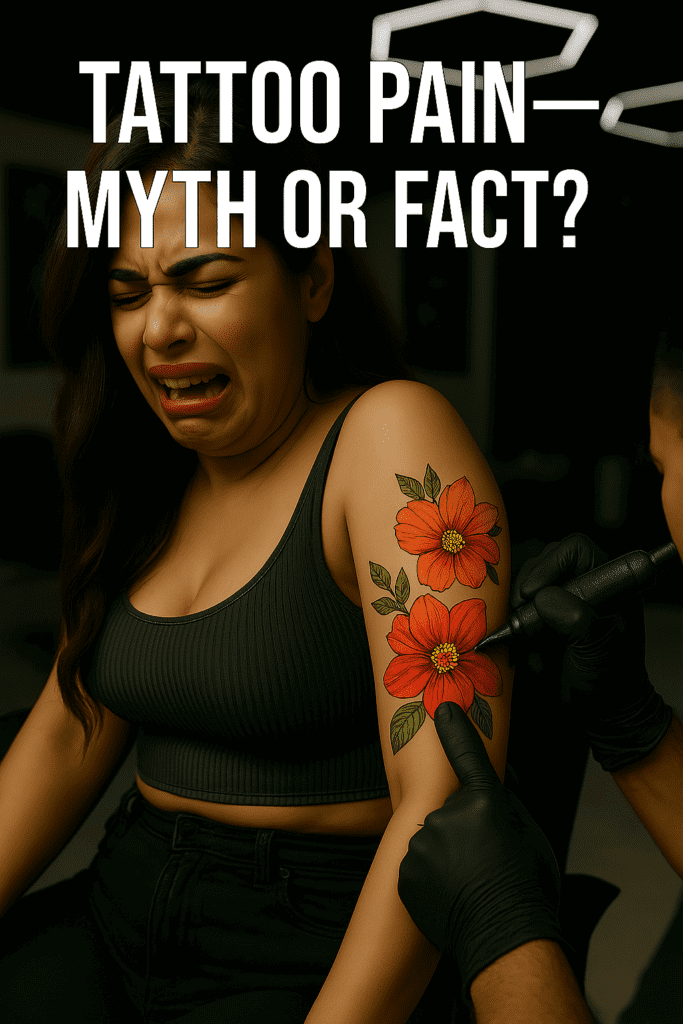
Tattoos are one of the most powerful forms of self-expression. Whether you’re getting your first piece of ink or expanding your collection, one question inevitably crosses everyone’s mind: “Does getting a tattoo hurt?” The answer is simple — yes, there is some level of discomfort involved, but it’s not as painful as most people imagine. With the right preparation, artist, mindset, and placement, the pain becomes manageable and often forgettable. In fact, many first-timers walk away surprised, saying it wasn’t bad at all.
In this blog, we’re breaking down exactly what tattoo pain feels like, how different body parts react, what you can do to reduce it, and why it shouldn’t stop you from getting the design you’ve always dreamed of.
What Tattoo Pain Actually Feels Like
Let’s start by clearing the biggest myth — getting a tattoo is not like being stabbed. It’s more like a scratch, vibration, or mild sunburn. The sensation is best described as:
- A repetitive scratching feeling
- A hot or warm sensation in the skin
- A slight stinging if you’re near sensitive areas
- A dull ache during longer sessions
Most people get used to the feeling within the first 5–10 minutes of the session. As your body releases endorphins, the discomfort levels drop and the process becomes more meditative than painful.
At Apex Tattooz, we’ve tattooed thousands of people — including first-timers, teenagers, older adults, and people with chronic conditions. Over 90% report the pain being much lower than they feared.
Areas That Hurt Less
Certain parts of the body are naturally better suited for your first tattoo. These areas have more flesh and fewer nerve endings:
- Upper arm (outer)
- Thighs (outer)
- Forearm
- Calves
- Shoulder blades
These spots offer a balance between comfort and visibility, making them perfect for beginners. Our artists at Apex Tattooz often recommend these zones for your first ink.
The Truth About Painful Areas
Now let’s address the areas that tend to be more uncomfortable:
- Ribs
- Spine
- Ankles
- Elbows
- Fingers
These areas have less fat and more bone, so you’ll feel a more direct vibration from the needle. That said, the discomfort is very temporary and completely manageable. We’ve had many clients sit through full ribcage tattoos while smiling and chatting.
Remember, pain is subjective. What feels intense for one person might be a breeze for another. It depends on:
- Your personal pain threshold
- Your mood and mindset
- Time of day
- Level of hydration and rest
Why It’s Not As Painful As You Think
There’s a reason why millions of people around the world have tattoos. If it were unbearable, nobody would get one — let alone come back for more.
Here’s why it’s less painful than you expect:
- The Body Adapts: Endorphins kick in to reduce discomfort
- It’s Controlled: The artist goes layer by layer, and you’re in full control
- It’s Quick: Small designs can be finished in 30–60 minutes
- You Can Take Breaks: At Apex Tattooz, we let you rest when needed
Our artists keep communication open throughout your session. If you ever feel overwhelmed (which is rare), we pause, breathe, and continue at your pace.
Tattoo Styles That Are Easy on the Skin
Certain tattoo styles are lighter on the skin and more comfortable to receive:
- Fine line tattoos – Minimal ink, very little trauma
- Dot work and geometric – Great for slow, clean work
- Minimalist symbols – Often completed within minutes
For inspiration, check out our Flash Tattoos collection — full of aesthetic, beginner-friendly pieces.
Our Tattoo Clients Say It Best
“I thought getting my forearm tattoo would kill me. It barely hurt. Felt more like a vibration.” – Tanisha, Delhi
“The back tattoo took 3 hours, but the artist at Apex made it feel like a breeze. We chatted the whole time!” – Yash, Noida
“Honestly, it felt like threading or waxing. Totally manageable.” – Mehak, Gurgaon
You can find more stories and healed tattoos in our Tattoo Gallery.
Mind Over Matter: Your Mental State Affects Pain
Studies show that fear and anxiety increase your perception of pain. That’s why staying calm, breathing normally, and being mentally prepared make a huge difference.
Before your tattoo session:
- Eat a light, nutritious meal
- Stay hydrated
- Avoid alcohol and energy drinks
- Get a full night’s rest
We also recommend bringing headphones or a playlist to help distract you. Some clients even meditate during their sessions.
Our Studio Experience
We designed Apex Tattooz to be a comfort-first studio:
- Climate-controlled studio
- Soft seating and adjustable tattoo beds
- Noise-free environment
- Clean, soothing interiors
- Trained, friendly staff
Our artists check in with you throughout the session to ensure everything’s good. Your comfort is our priority.
Numbing Creams: Are They Safe?
Yes, numbing creams are available for clients who are especially sensitive or nervous. At Apex, we use studio-grade topical anesthetics that minimize discomfort without affecting ink quality.
- Effective for sessions under 2 hours
- Ideal for tattoos on ribs, feet, or hands
- Applied 30 minutes before tattooing
Ask us during your consultation if you’d like numbing cream to be used: Book Appointment
Summary: Pain Is Temporary, Ink Is Forever
Yes, tattoos involve a degree of discomfort — but it’s absolutely manageable, and often much easier than people expect. Most clients say it feels like:
- Threading
- Cat scratch
- Warm burn
- Controlled skin pressure
Not a single client has ever walked out mid-session due to pain. With the right artist, right mindset, and right studio, getting a tattoo is not just tolerable — it’s empowering.
Need More Info or Want to Talk?
Our team is here to guide you from idea to ink.
Follow us for real tattoo videos, healing updates, and studio tours:
- Instagram – @apextattooz_newdelhi
- Threads – @apextattooz_newdelhi
- YouTube – @madyy2283
- Facebook – Apex Tattooz
So, does getting a tattoo hurt? A little — but not enough to stop you. And definitely not enough to regret it.
Apex Tattooz – Where Real Ink Meets Real Care.
_______________________________________________________________________________________________
Understanding the Tattoo Pain Experience: What You Should Know
As we continue exploring the question “Does getting a tattoo hurt?”, let’s dive deeper into the actual sensations, common myths, and how you can minimize discomfort. Tattoos are a commitment, and understanding what the process feels like can help ease anxiety and prepare you mentally.
What Does Tattoo Pain Really Feel Like?
Tattoo pain isn’t as dramatic as many fear. In reality, most clients describe it as annoying or irritating — similar to a cat scratch, sunburn, or minor burning sensation. It’s not sharp or excruciating, especially when done by a skilled artist in a controlled environment. A lot of people expect unbearable agony, but quickly realize that the fear was worse than the actual experience.
The tattoo machine uses a group of very fine needles that puncture the skin rapidly and lightly, injecting ink into the dermis layer. This might sound intense, but it’s not as deep or severe as medical procedures, and the body adapts to the sensation in a matter of minutes.
Which Areas Hurt the Least?
If you’re concerned about pain but still want a tattoo, start with low-pain areas. These spots typically have more fat, muscle, or flesh and fewer nerve endings, which dulls the sensation. Some beginner-friendly areas include:
- Outer upper arm
- Forearm
- Calves
- Outer thigh
- Shoulder
- Upper back
These areas are ideal for your first tattoo because they balance visibility, size, and comfort.
Tattoo Pain Is Temporary, The Art Is Forever
It’s important to remember that the pain is temporary, but the tattoo is permanent. Most sessions range between 30 minutes to 2 hours. Some complex pieces may require multiple sittings, but breaks are included.
As many seasoned tattoo collectors say, “It’s more about patience than pain.” Once you get past the first 5–10 minutes, the discomfort tends to level out and becomes manageable. In fact, some people even find the process therapeutic.
Techniques to Reduce Tattoo Pain
If you’re still worried, there are effective ways to reduce tattoo pain:
- Eat a good meal before your session: Avoid coming on an empty stomach. Proper nutrition helps regulate blood sugar.
- Hydrate well: Healthy, hydrated skin handles tattooing better.
- Avoid alcohol or caffeine 24 hours before: They thin the blood and increase discomfort.
- Numbing creams: Many studios, including Apex Tattooz, offer topical anesthetics.
- Stay relaxed and breathe: Music or light conversation helps.
- Trust your artist: Comfort and confidence make the experience easier.
Psychological vs. Physical Pain
Interestingly, tattoo pain is as much mental as it is physical. Many people who fear pain are surprised at how well they tolerate it. The brain naturally produces endorphins (natural painkillers) during tattooing, which dulls discomfort and boosts your mood.
That’s why you’ll often see people smiling or laughing during their sessions. You might even get a little “tattoo high” from the adrenaline rush.
Real Clients, Real Comfort
At Apex Tattooz, we take every step to ensure your experience is as comfortable as possible. Our studio is designed with clean, relaxing interiors, ergonomic chairs, and skilled artists who understand client psychology.
“ I thought it would hurt a lot, but it was completely manageable! ”
“ After 10 minutes, I actually enjoyed it. ”
“ My artist talked to me the whole time — it really helped. ”
Want to see happy clients mid-tattoo? Check out our Instagram highlights under “Happy Faces”.
Is It Safe to Take Painkillers?
This is a common question: Can I take a painkiller before getting tattooed?
Most professionals advise against taking aspirin or ibuprofen, as they can thin your blood and affect healing. If you must, consult your doctor and artist first. Some studios allow acetaminophen (paracetamol), which doesn’t thin blood.
Aftercare Pain vs. Tattooing Pain
Sometimes people report more discomfort after the tattoo rather than during. This usually happens if:
- You scratch or pick at the tattoo
- You expose it to sweat, friction, or dirt
- You don’t moisturize it properly
To avoid post-tattoo irritation, follow proper care. Visit our full Tattoo Aftercare guide.
Still Worried?
We offer free consultations to help you decide your placement, size, and comfort level: apextattooz.com/contact
In the next section of the blog, we’ll talk about tattoo pain myths, how pain varies by gender, and what to expect in your second or third session — because your first tattoo usually opens the door to many more!
Stay Connected
Follow us for real tattoo stories and healing updates:
- Instagram – @apextattooz_newdelhi
- Threads – @apextattooz_newdelhi
- YouTube – @madyy2283
- Facebook – Apex Tattooz
So, does getting a tattoo hurt? A little — but it’s totally worth it.
Apex Tattooz – Where Real Ink Meets Real Care.
Tattoo Pain Myths Busted: What You Really Need to Know
By now, you already understand that getting a tattoo isn’t nearly as painful as people make it sound. Still, there are tons of myths floating around that create unnecessary fear. In this section, we’re going to break those down and reveal the truth behind the most common misconceptions.
Myth 1: Tattoos are excruciating.
Let’s put this one to rest: tattoos are not excruciating. They’re uncomfortable, yes, but not unbearable. If tattoos were truly as painful as rumored, millions of people across the world wouldn’t have multiple pieces of ink on their bodies.
In fact, at Apex Tattooz, we’ve seen people fall asleep during longer sessions. That’s how manageable the sensation can be.
Myth 2: Women can’t handle tattoo pain.
This couldn’t be further from the truth. In many cases, women tolerate tattoo pain better than men, possibly due to higher natural pain thresholds (think: childbirth). What’s more, many women come prepared with research, care tips, and a calm mindset, making their sessions smooth and confident.
Myth 3: The bigger the tattoo, the more it hurts.
A bigger tattoo doesn’t automatically mean more pain. What matters more is the location and time under the needle. A small tattoo on a bony area can feel more intense than a large tattoo on the thigh.
The actual discomfort also depends on how your body adapts to the sensation over time. Many clients report that longer sessions become easier after the first 20–30 minutes.
Myth 4: Tattoo machines drill deep into your skin.
This is a huge misconception. Tattoo machines do not drill. They use clusters of fine needles that move rapidly up and down, barely penetrating beyond the dermis, which is just below the outer layer of skin. It’s more like controlled scratching than drilling.
This technique ensures the ink stays permanent while minimizing trauma to your skin.
Myth 5: You can’t handle it if you’re afraid of needles.
A tattoo needle is not like a medical needle. There’s no single sharp object piercing your skin slowly like during an injection. Tattoo needles are much smaller, move extremely fast, and work in clusters. The sensation is entirely different — and frankly, far more tolerable.
Even people with needle anxiety often say, “That wasn’t as bad as I expected!”
How Pain Varies by Tattoo Style
Another overlooked factor is the type of tattoo design you’re getting:
- Linework tattoos: Light discomfort; the needle only goes over the skin once per line.
- Shading: More irritating due to repeated passes for depth.
- Color packing: Most intense, due to layering and density.
Your artist will usually begin with the outline first, giving your body time to adapt before more intense work begins.
Pain Tolerance and Body Chemistry
Every person has a different pain threshold. Factors that can affect your sensitivity include:
- Hydration levels
- Sleep quality
- Stress or anxiety
- Hormonal changes
- Time of day
Pro tip: Morning appointments are often easier — your body is rested, and cortisol is lower, helping you manage pain better.
People Who Say It Didn’t Hurt at All
This may surprise you, but many of our clients genuinely say it didn’t hurt — it just felt strange or ticklish. At Apex Tattooz, our team uses advanced rotary machines, light hand pressure, and high-quality ink, which significantly reduces trauma and pain.
“ I came in terrified, but 10 minutes in, I was smiling. ”
“ My artist distracted me with music and chill conversation — I barely noticed the needle. ”
“ Honestly, threading hurts more than this. ”
Want to see real expressions? Check our Instagram gallery for photos of smiling clients during sessions.
Tattoo Pain & Second-Time Clients
Here’s a cool fact: people who return for their second or third tattoo are usually less anxious. They already know what to expect and often say, “It felt easier than the first time.”
That’s because fear of the unknown is usually what causes the most distress — not the actual sensation. Once you’ve been through it once, your brain knows how to manage expectations and pain better.
Real Talk from Apex Clients
- Shruti (first-timer): “I thought I’d cry. But once I settled into the chair, it felt like buzzing more than pain.”
- Rahul (3 tattoos): “My back tattoo was a breeze. I expected the worst, but it was meditative.”
- Meera (second session): “The healing part was itchier than the tattoo itself.”
Still unsure? We offer free tattoo consultations where you can talk to real artists and clients before making your decision. Book now.
Tattoo Aftercare and Healing: The Truth About Pain Post-Inking
Now that you’ve made it through the tattoo session — or at least have a clearer idea of what to expect — let’s talk about what happens after. One of the most frequently asked questions we get at Apex Tattooz is: “Does the tattoo hurt after it’s done?” The short answer? Not really. In fact, the after-session phase is often much easier to handle than people imagine.
Let’s break down what you’ll experience, how to reduce discomfort, and how to ensure your tattoo heals beautifully.
What Does a Tattoo Feel Like After the Session?
Immediately after the tattoo is finished, you may feel a mild burning or stinging sensation. This is totally normal and is your body’s way of responding to the tiny punctures made during the tattooing process.
Here’s what to expect in the first few hours:
- The tattooed area may feel warm to the touch.
- There may be mild swelling and redness.
- You might notice some clear fluid or blood spotting — don’t panic, this is part of healing.
Most clients describe the feeling as similar to a sunburn — not sharp pain, just sensitivity.
The First 24–48 Hours: Setting the Foundation
Your tattoo artist will clean the area and apply a protective bandage or film wrap. Keeping this on for the recommended amount of time (usually 2–6 hours) helps prevent bacteria from entering the skin and reduces immediate irritation.
After removing the wrap:
- Wash the tattoo gently with lukewarm water and mild fragrance-free soap.
- Pat dry with a clean towel — don’t rub!
- Apply a thin layer of a tattoo-recommended ointment (like Bepanthen, Hustle Butter, or a product your artist suggests).
- Avoid re-wrapping unless instructed.
During this time, the tattoo may still be sore to touch, but you won’t experience throbbing or deep pain.
Days 3–7: The Itchy Phase (Not Painful — But Annoying)
Once the initial soreness wears off, your tattoo will start scabbing and peeling. Think of it like how your skin peels after a sunburn — it’s a sign of healthy healing.
But here’s the catch: It itches like crazy.
This is where your discipline comes in:
- Do not scratch or pick at the scabs.
- Moisturize 2–3 times daily with a light lotion.
- Wear loose, breathable clothing to avoid rubbing.
Pro tip: Keep your tattoo out of direct sunlight and avoid workouts that might cause excess sweating or stretching near the tattoo area.
When Is It Safe to Say “It’s Healed”?
Typically, a tattoo takes:
- 2–3 weeks to look healed on the surface
- 4–6 weeks for full internal healing (especially for large or detailed tattoos)
During this time, there may be mild skin sensitivity if you bump or rub it, but most clients feel no pain after the first 48 hours.
Some things to watch out for:
- Unusual redness spreading around the tattoo
- Thick, yellow pus or excessive bleeding
- Fever or chills (extremely rare)
If any of these occur, consult your tattoo artist or a doctor. At Apex Tattooz, we provide aftercare follow-up support for every client. You’re not alone on this journey.
Tips to Reduce Tattoo Pain & Speed Healing
- Stay hydrated: Water helps your skin stay elastic and speeds up healing.
- Eat nutrient-rich foods: Vitamin C, zinc, and protein support skin repair.
- Avoid alcohol and smoking: Both can delay healing and increase scabbing.
- Stick to your aftercare routine: Clean, moisturize, repeat.
- Sleep well: Let your body focus on recovery.
Remember, a well-healed tattoo doesn’t just feel better — it also looks sharper and brighter for years.
Mental Side of Tattoo Healing: Stay Positive
Many clients say that the post-tattoo glow is real. Once the mild soreness fades, you’ll start seeing your new tattoo come to life as the skin settles and the ink settles in.
Some clients even get an emotional boost — a sense of empowerment, confidence, and pride in carrying something meaningful on their body.
If you’re someone who’s been worried about the pain, we can confidently say: the reward is always greater than the discomfort.
Recap: Does Getting a Tattoo Hurt?
Let’s summarize the truth — especially for those still on the fence:
- The tattooing process is more of a discomfort or scratching feeling, not sharp pain.
- Pain is temporary, but the artwork is forever.
- With the right studio (like Apex Tattooz), the experience is smoother, safer, and often enjoyable.
- The healing process comes with mild irritation, not severe pain.
- Proper aftercare is your best tool to stay pain-free and protect your investment.
Still Worried About Tattoo Pain? Book a Free Consultation
At Apex Tattooz, we offer personalized tattoo planning where you can:
- Talk to an artist about pain concerns
- Learn which placements are the least painful
- Get aftercare kits and advice
- Even explore numbing options if needed
We believe in tattoos that heal well, feel right, and express who you are.
Let’s make your ink journey amazing.
Visit: apextattooz.com/contact
And don’t forget to follow us for live tattoo sessions, client stories, and inspiration:
- Instagram – @apextattooz_newdelhi
- YouTube – @apextattooz_newdelhi
Apex Tattooz – Where art meets skin, and comfort meets creativity.
